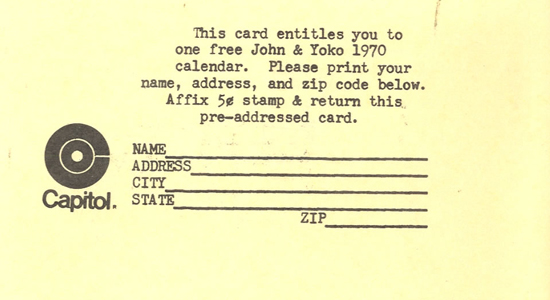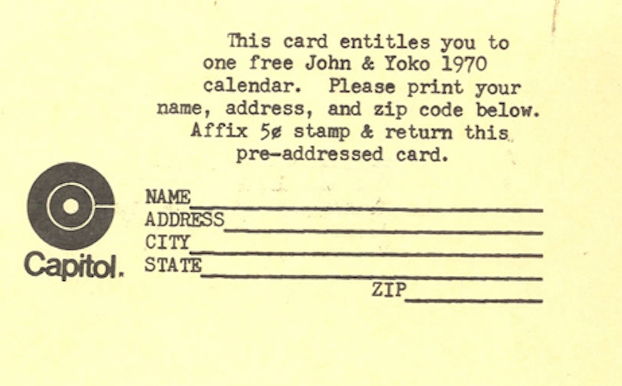It’s difficult to imagine anyone left on the face of the planet (already familiar with the man’s work, that is) who isn’t aware that singer/songwriter John Wesley Harding and critically acclaimed novelist Wesley Stace are one and the same. Henceforth, he has announced that he will record under the name Wesley Stace, and hopefully never again be asked why he assumed the name of a 1967 Bob Dylan album, misspelling and all. “It’s like what happens at the end of a Spider-Man or a Batman movie,” says Stace. “When the superhero reveals his true identity to his girlfriend.” “Girlfriend” may be the operative word on Stace’s new album, Self-Titled (Yep Roc), in which a 47-year-old man, now comfortably married and living in Philadelphia, reflects back over the loves of his younger life. Stace will be guest editing magnetmagazine.com all week. Read our new feature on him.

Stace: The music and personality of Yoko Ono is, to put it mildly, divisive. I was into her when I was younger, without ever enjoying her music very much, purely because John was into her. Then I went massively off her for a very simple reason: an essay by Gillon Aitken for the London Review Of Books (25th July 1991), called Bidding For Yoko. Anyway, Yoko comes out of it badly.
Anyway, I’ve come to love a lot of Yoko’s music—particularly “Born In A Prison” and “We’re All Water From Some Time In New York City,” which I’ve tried unsuccessfully to persuade various singers to cover over the years, because they’re eminently coverable, but not quite right for me. Recently, because I’ve run out of her songs on albums I patronisingly consider, contrary to all the evidence at hand, to be John Lennon albums (because he’s, y’know, ultimately better), I started to looked deeper into her solo work, the first album of which I bought by mistake thinking I was buying a vinyl copy of Lennon’s album with the same cover. (Classic. The clue should have been, there’s a big picture of her as a baby on the back, not of him.)
From the Ono band album to the follow-up Fly is not a big leap: The change comes with the next one, Approximately Infinite Universe, which I think is great, and, in the dumbest terms possible, a normal-sounding record. She sings quite beautifully: Check out “Death Of Samantha.” If you don’t like that, you’ll probably never like Yoko, and don’t worry about it. On this album, the band, Elephant’s Memory, is playing songs and very well. There remains the sneaking suspicion that she may be evil, but I remain a fan; in fact, I like her more than ever.
But I’m not even here to talk about her music, or her albums, just their packaging.
Nobody knew how to throw bits and bobs into a record like Yoko did. I wish I was at home and had all these records on me, because I could refer to them, but we all know that no record (except possibly Chicago Live At Carnegie Hall) is so crammed with artifacts as The Wedding Album: slices of wedding cake (cardboard), facsimile wedding certificate, photographs, posters, etc. (Cynics may point out that this is a tactic to deflect attention from the fact that there is very little actual music on the record.) In fact, my copy is missing the white BAGISM bag, and if anyone’s got a spare in good quality, I’d really like it.
But the exciting truth is that all the albums are full of postcards and posters and other bric-a-brac, the kind of doodads that are so pleasing to a secondhand record collector, and the absence of which (if known) devalues the records so greatly. Is anything greater than the “John and Yoko calendar,” with its visionary 13 month, which you could send off for with the card from Live Peace In Toronto?
The remarkable laminated cover of Fly, and the stiffness of its spine, is bettered only by the great poster within of Yoko in shades, a golfing John reflected in her sunglasses. The lyric sleeves, with Lennon doodles, are also beautiful (just like the one in Imagine, one of the finest lyric sleeves ever), as is the inside of the gatefold, a photomontage of quite a few Beatles playing as a motley orchestra on the beach. Just when you think you’ve exhausted the surprises, out falls a little postcard, not (on this occasion) a free calendar offer, a letter to the U.S. government demanding citizenship for John and Yoko, or an encouragement to vote, but a simple postcard, with a die-cut hole in it, inscribed: “A Hole To See The Sky Through,” a Yokoish-thought that falls somewhere between deep and ditzy. But because she’s Yoko, it’s not only an exhortation to wonder but also a way to sell stuff: Her new book Grapefruit is advertised on the other side. Too much!
So, if you’re going to buy Yoko albums, and John and Yoko albums, get the vinyl, and make sure your secondhand copy “includes all the inserts.”
I just downloaded a tape of David Bowie DJ-ing, picking his favourite music on Radio 1, Lodger-ish era. There’s a great moment when he announces a song as, “a really despondent track … he’d left his band, and he was doing his first solo album. I found it rivetingly depressing,” and then he plays something from Lennon’s first solo album (as opposed to Something by George Harrison; in fact I’m sure I now remember it was the Lennon song “Remember”): very moving when you consider the break up of the Beatles, and the anger of Lennon’s first solo record, in the simple terms Bowie suggests.







